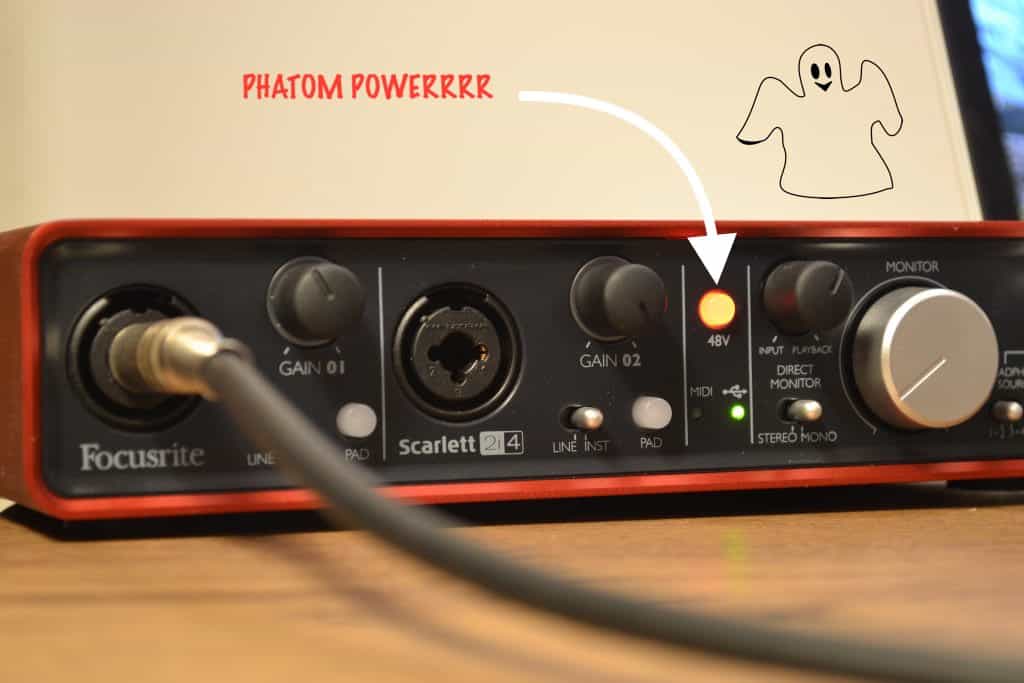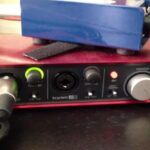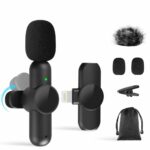Does a condenser mic need phantom power?: Condenser microphones are more sensitive than dynamic microphones and require a power source, typically in the form of 48-volt phantom power, to operate properly. While many mixing boards have built-in phantom power supplies, some do not. If your mixer does not have phantom power, you will need to use an external supply or a microphone that does not require phantom power.
If you’re wondering whether a condenser mic needs phantom power, the answer is yes! A condenser mic requires phantom power in order to operate properly. Without phantom power, the mic will not be able to produce a clear sound.
So if you’re using a condenser mic, make sure that your audio interface or mixer has phantom power enabled.
Also Read: Best Condenser Mic Under 200
Table of Contents
Does a Dynamic Mic Need Phantom Power
A dynamic mic does not need phantom power. Phantom power is only needed for condenser microphones.
Phantom Power Condenser Mic
A condenser microphone is a type of capacitor-based microphone. The condenser mic was invented by E. C. Wente of Bell Laboratories in 1916. Condenser microphones are used in many applications including studio recording, live sound reinforcement, and public address systems.
A typical condenser microphone consists of a metal diaphragm (or “capsule”), a backplate, and two electrical leads. The diaphragm vibrates when struck by sound waves, which causes a change in the distance between the plates. This change in distance modulates the capacitance, which produces an electrical voltage that is proportional to the acoustic pressure on the diaphragm.
When used for studio recording, phantom power supplies are typically used to provide power to the capsule. Phantom power is DC electricity that is sent through audio cables to devices that need power but cannot draw it from the AC mains supply (e.g., battery-operated devices).
Many audio mixers and preamplifiers have built-in phantom power supplies; alternatively, outboard units can be purchased separately and added to the signal chain as needed.
When selecting a condenser mic for use in your studio, there are many factors to consider such as frequency response, polar pattern, sensitivity, and price point. Some popular brands include Neumann, AKG, Rode, and Audio-Technica—to name just a few! With so many options on the market today, doing your research ahead of time will help you narrow down the choices and find the perfect microphone for your needs.
Do Ribbon Mics Need Phantom Power
Ribbon microphones do not require phantom power. In fact, applying phantom power to traditional ribbon microphones can damage them.
Here’s a breakdown:
- Traditional Passive Ribbon Mics: These microphones don’t need phantom power and can be damaged if phantom power is mistakenly applied, especially if there are issues with the cable or connections. This is because the ribbon element is delicate and can be burnt or torn by a surge of voltage.
- Active Ribbon Mics: Modern active ribbon microphones are designed with internal electronics, typically a preamp, to boost their output and make them more compatible with a wider range of audio interfaces and preamps. These active ribbon mics do require phantom power, but it’s for their internal electronics and not the ribbon element itself.
If you’re unsure about your specific microphone, always consult the user manual or manufacturer’s recommendations before connecting it to a source of phantom power. When connecting any microphone, it’s a good practice to ensure that phantom power is turned off before making the connection and only turn it on if you’re sure the microphone requires it.
What is Phantom Power for Mics
Phantom power is a term used to describe a method of powering condenser microphones. It is typically used in recording studios and live sound reinforcement systems. The name “phantom” comes from the fact that the power supply is not directly connected to the microphone.
Rather, it is sent through the audio cable that also carries the signal from the microphone to the mixer or other device. The most common voltage used for phantom power is +48 volts DC. Some mixers and other devices provide +24 volts instead.
A few devices offer switchable phantom power, allowing you to use either voltage. To use phantom power, connect an XLR mic cable from the mic to the mixer or other device. Make sure that the device is set to provide phantom power and turn on the power supply.
If all goes well, you should now be able to use your condenser mic with no problems!
How to Use Phantom Power With Condenser Mic
If you’re using a condenser microphone, you’ll need to use phantom power to get optimal sound quality. Here’s how to do it:
1. Connect your mic to the phantom power source. This will usually be a mixer or audio interface.
2. Make sure the phantom power is turned on. On a mixer, this will usually be a switch that says “Phantom” or “48V.” On an audio interface, there may be a separate power supply that you need to plug in.
3. Adjust the level of phantom power as needed. If your mic sounds distorted or noisy, try turning down the phantom power until it sounds clear again.
How Does Phantom Power Work
If you’ve ever used a condenser microphone, you’ve probably noticed a switch labeled “48V” or “Phantom Power.” But what is phantom power, and how does it work? In short, phantom power is a DC voltage that is sent through the audio cable to provide power to condenser microphones and other devices that require external power.
Most professional audio equipment uses 48-volt phantom power, although some cheaper devices may use lower voltages. The name “phantom power” comes from the fact that the voltage is sent through the same wires that carry the audio signal. So it’s sort of like an invisible power source that powers your microphone without any extra cables or batteries.
Pretty cool, right? But how does this actually work? Let’s take a closer look…
How Does Phantom Power Work? At its most basic level, phantom power can be thought of as a two-wire AC (alternating current) to DC (direct current) converter. The two wires are the positive and negative sides of the AC signal (the audio signal), and the DC voltage is applied between them.
This DC voltage provides power to anything connected to those wires, such as a condenser microphone capsule. Of course, it’s not quite that simple. The actual implementation of phantom power is a bit more complicated than just applying a DC voltage across two wires.
For one thing, professional audio equipment typically uses balanced lines instead of unbalanced lines. Balanced lines have three wires: two for the left and right channels (the + and – sides of the AC signal), and one ground wire. The ground wire helps to reduce noise by keeping unwanted electrical signals from getting into your audio gear.
Phantom power usually works by sending +48 volts on one line and -48 volts on the other line, with respect to ground. This creates what’s called a bridging configuration because there are now two different voltages present on either side of ground (imagine drawing a line between +48 volts and -48 volts on either side of ground).
Anything connected between those two points will now have 96 volts applied across it! However, most microphones only need about 10-15 volts to operate properly, so why not just send +10/-10 volts instead? The reason has to do with something called common mode rejection ratio (CMRR).

Does Phantom Power Improve Your Condenser Mics Audio?
Phantom power doesn’t inherently “improve” the audio quality of a condenser microphone. Instead, phantom power is required for most condenser microphones to function properly. Here’s a more detailed explanation:
- What is Phantom Power? Phantom power is a means to provide the necessary voltage (typically 48V, but sometimes 12V or 24V) to condenser microphones to power their internal electronics. This voltage is sent through the microphone cable itself.
- Why Do Condenser Microphones Need Phantom Power? Condenser microphones have a unique design compared to dynamic microphones. They use a charged diaphragm/plate assembly which produces an electrical signal when sound waves cause the diaphragm to move in relation to a back plate. The electronics inside these microphones require power to:
- Charge the diaphragm.
- Power the internal preamplifier circuitry.
- Does Phantom Power Improve Audio Quality? Not directly. Phantom power simply allows the condenser microphone to function. Without it, most condenser microphones would produce no sound or a very weak signal. If you’re connecting a condenser microphone to an interface or mixer that doesn’t supply sufficient phantom power, you might hear:
- Very low output or no sound at all.
- Distorted or unclear audio. Once the microphone receives the correct phantom power, it will produce audio as designed.
- Safety Precautions:
- Always turn off phantom power when plugging or unplugging microphones to avoid pops or clicks which can be harmful to speakers, headphones, or your ears.
- Dynamic microphones generally don’t require phantom power, but most are designed to be unaffected if phantom power is applied. However, some vintage or specialized mics can be damaged, so always check before applying phantom power.
- Be cautious with ribbon microphones. Traditional ribbon mics can be damaged by phantom power, though many modern ribbon mics are designed to be safe from it.
Phantom power doesn’t “improve” the audio of a condenser mic; it makes it possible for the mic to work correctly. If your condenser mic sounds poor or weak without phantom power, it’s not that the phantom power improves it—it’s that the mic needs that power to function properly.
Can I Use a Condenser Mic Without Phantom Power?
If you’re looking to use a condenser microphone without phantom power, the short answer is yes – but there are a few things to keep in mind. First, it’s important to understand what phantom power is and how it works. Phantom power is simply DC voltage that is sent through the mic cable to the condenser microphone capsule in order to polarize its diaphragm.
This enables the mic to produce a much higher-quality sound than would be possible without phantom power. However, not all condenser microphones require phantom power; many models will work just fine without it. If you’re not sure whether your particular model needs phantom power or not, consult the manual or manufacturer’s website for more information.
In general, though, most entry-level and mid-range condenser microphones will work without phantom power just fine. One thing to keep in mind if you’re using a condenser mic without phantom power is that the quality of your sound may not be as good as it could be with phantom power.
However, if you don’t have access to phantom power or your budget doesn’t allow for it, using a condenser mic without phantom power is still better than not using one at all!
How Do I Know If My Mic Needs Phantom Power?
If you’re not sure whether your mic needs phantom power, there are a few things you can check. First, consult the manual for your microphone. If it doesn’t mention anything about phantom power, then chances are it doesn’t need it.
Another way to tell is to look at the socket on your microphone. If it’s a XLR socket, then it probably needs phantom power. If it’s an 1/4″ jack, then it probably doesn’t need phantom power (but there are some exceptions).
Finally, you can try plugging your mic into a mixer or audio interface that has phantom power and see if it works. If it does, then you know your mic needs phantom power.
What Kind of Power Does a Condenser Microphone Need?
A condenser microphone needs a power source in order to work. This can come from a battery, an external power supply, or phantom power from a mixing console or audio interface. Without any of these sources of power, the microphone will not be able to function.
Condenser microphones are more sensitive than other types of microphones and require more power to operate. The amount of power needed will depend on the specific model of microphone, so it is important to consult the manufacturer’s specifications.
Phantom power is a common method of powering condenser microphones, and many mixing consoles and audio interfaces have this feature built-in.
If your device does not have phantom power, you will need to use an external power supply. Battery-powered condenser microphones are also available, which can be handy in situations where there is no reliable source of AC power.
These models typically have a shorter battery life than their phantom-powered counterparts, so it is important to keep this in mind when making your purchase.
How Much Phantom Power Does a Condenser Mic Need?
When it comes to condenser microphones, there are two different types: those that require phantom power and those that don’t. The type of microphone you have will determine how much phantom power it needs in order to function properly. If your condenser microphone requires phantom power, then it will need between 48-52 volts of DC power in order to operate.
This is typically provided by either a battery or an external power supply. If your microphone does not require phantom power, then it will only need a small amount of DC bias voltage in order to function properly. This can be provided by either a battery or an external power supply as well.
What Is Phantom Power And Why Do You Need It? – RecordingRevolution.com
FAQ
1. What is a condenser microphone?
A condenser microphone is a type of microphone that uses a capacitor (or condenser) to convert acoustic energy into electrical energy. This is different from dynamic microphones, which use a moving coil and magnet.
2. What is phantom power?
Phantom power is a method of providing electrical power to certain types of microphones through the microphone cable itself. It’s typically a DC voltage (usually 48V, but sometimes 12V or 24V) that’s supplied by a mixer, audio interface, or a dedicated phantom power supply.
3. Do all condenser mics need phantom power?
Most condenser microphones require phantom power to charge their internal electronics. However, there are some condenser microphones designed to operate on battery power, and they do not require phantom power when the battery is in use.
4. Can dynamic microphones use phantom power?
Dynamic microphones do not require phantom power to operate. However, most dynamic mics are designed to tolerate phantom power, meaning that if it’s accidentally applied, it won’t damage the microphone. But it’s still a good practice to ensure that phantom power is off when not needed.
5. What happens if I don’t provide phantom power to a condenser mic that needs it?
A condenser microphone that requires phantom power will not function correctly or at all without it. You’ll likely get either very low output or complete silence.
6. Can too much phantom power damage my condenser microphone?
Most condenser microphones are designed to handle the standard 48V phantom power. Applying a voltage higher than what the microphone is designed for could potentially damage it. Always refer to the microphone’s specifications to ensure you’re using the correct voltage.
7. How can I provide phantom power to my condenser mic?
Many audio interfaces, mixers, and standalone phantom power supplies can provide the necessary phantom power to condenser mics. Ensure that your device can deliver the appropriate voltage (typically 48V) that your microphone requires.
8. Are there any risks associated with using phantom power?
If used correctly and with compatible devices, phantom power is safe. However, plugging or unplugging microphones while phantom power is active can sometimes result in pops or clicks, which can be harmful to speakers or headphones.
9. Do all audio interfaces and mixers provide phantom power?
Not all audio interfaces or mixers provide phantom power. If you plan to use a condenser microphone, ensure that your equipment can supply phantom power or consider investing in a standalone phantom power supply.
10. Can I use a battery-powered condenser microphone with phantom power?
Some battery-powered condenser microphones can also run on phantom power when the battery is drained. Others might bypass the battery when phantom power is supplied. Always refer to the microphone’s user manual for guidance.
Remember always to consult your microphone’s manual or manufacturer’s guidelines when considering the use of phantom power.
Conclusion
If you’re wondering whether a condenser mic needs phantom power, the answer is yes. Phantom power is necessary for condenser mics because they have active electronics that require a power source. Without phantom power, the mic wouldn’t be able to function properly.
Relevant Post:
Why is My Condenser Mic Not Working?
How to Connect Condenser Mic to Bluetooth Speaker?
How to Connect Condenser Mic to Mac?
How to Connect Condenser Mic to Speaker?
How to Connect a Condenser Mic to a Pc?
Are you a user of a condenser mic?
How to Connect Condenser Mic to Audio Interface?
How to use condenser mic on tiktok?
Can you record guitar with a condenser mic?

Williams Kane is a blogger and writer. He’s passionate about writing and connecting with the community, especially when it comes to sharing his ideas through writing.
I am a versatile author with a passion for exploring a wide range of topics on our multi-niche website. With a background in research and a love for writing, I bring a unique blend of expertise to our platform.
My journey began in the world of science, where I earned a degree in biology and developed a deep fascination for the natural world. This background enables me to delve into topics related to ecology, environmental conservation, and the wonders of the animal kingdom.
However, my curiosity knows no bounds, and I have ventured into various other niches as well. From technology trends and digital innovations to health and wellness tips, I strive to provide well-researched and engaging content that informs and entertains our diverse audience.
Furthermore, my dedication to staying current with the latest developments in each niche ensures that our readers receive up-to-date and reliable information. Whether it’s deciphering complex scientific concepts or simplifying tech jargon, I take pride in making complex subjects accessible to all.
Join me on our multi-niche journey, where we explore the depths of knowledge and share insights on a multitude of topics to inspire, educate, and entertain.






